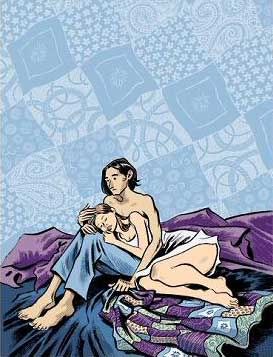
Dialogue based -
 'Text Based
'Text Based Text Enghanced
Text Enghanced
Text free
I have been talking about the semantics of Blankets in my past three posts but this time I wan to talk about the activity we did in class where we made our own comic out of a series of pictures provided to us. This got me thinking about how the words interact with the pictures and how the language was placed in the work. So I gathered a few comics from Far Side and Calvin and Hobbes to compare.
The Calvin and Hobbes clip exhibits how text can aid in the understanding of a picture. the conversation that develops throughout the frames is intensified by the lack of words in the 2nd to last frame. Each word enhances the meaning of the work and defines the characters in the piece.
In the first Far Side image the words create the humor of the work however instead of dialogue there are only two signs that contain text. These two signs indicate that the man is *gifted* but cannot seem to open a door- with out the signs there would be no understanding and the work would lose meaning.
In the second Far Side image with the penguins, the words simply add to the humor, for the image could stand alone but the words intensify the image where as in the Calvin and Hobbes case the words allow the reader to understand the piece.
In the third image there is not text at all and yet the comic still delivers its message.
By comparing these 4 images one can see how different comics utilize different forms of text and relate it to .. you guessed it. Blankets. Each of these different styles are used in Blankets, dialogue based images, text based images, text enhanced images and text free images to create a mosaic within a story much like the blanket Raina sewed for Craig.


